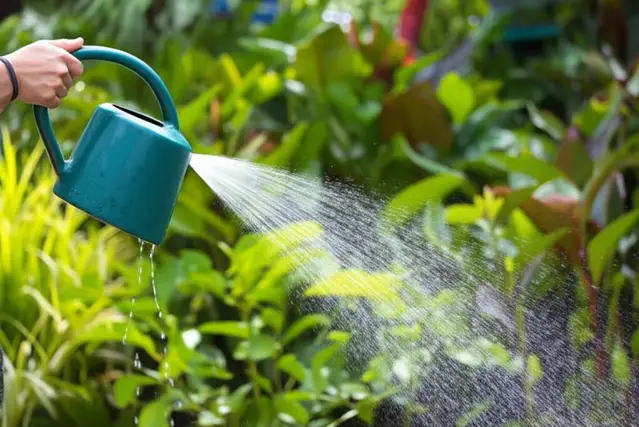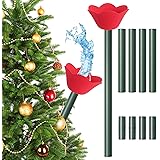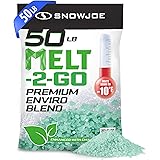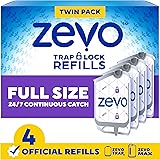Watering plants seems simple enough, right? Pour some water in, and they thrive. Unfortunately, it’s not quite that straightforward. Overwatering and underwatering are two of the most common ways people accidentally harm their beloved greenery.
Getting the watering schedule just right requires understanding your plants’ specific needs, considering environmental factors, and staying updated with the latest best practices. This comprehensive guide, updated for 2024, will equip you with the knowledge to become a plant-watering pro!
In this guide, we’ll dive deep into the science behind plant hydration, explore various watering methods, and offer tailored advice for different plant types, climates, and seasons.
We’ll also cover common mistakes and provide troubleshooting tips to help you diagnose and correct watering-related issues. Whether you’re a seasoned plant parent or just starting your indoor jungle, this guide is your ultimate resource for mastering the art of plant watering.
The Importance of Proper Watering
Water is essential for plant life, just like it is for humans. It plays a critical role in several key processes:
- Photosynthesis: Water is a key ingredient in photosynthesis, the process by which plants convert light energy into chemical energy (food).
- Nutrient Transport: Water acts as a solvent, dissolving essential nutrients from the soil and transporting them throughout the plant.
- Structural Support: Water helps maintain turgor pressure within plant cells, providing rigidity and support to stems, leaves, and flowers. Without sufficient water, plants wilt.
- Temperature Regulation: Plants lose water through transpiration (evaporation from leaves), which helps cool them down, especially in hot weather.
Understanding these roles highlights why proper watering is crucial for plant health and survival. Too little water, and the plant can’t perform these vital functions, leading to stunted growth, wilting, and even death. Too much water, and the roots can become waterlogged, leading to root rot and other problems.
Understanding Your Plants’ Needs: Key Factors
Before you start pouring water, it’s essential to understand what your individual plants need. Several factors influence how often a plant requires watering:
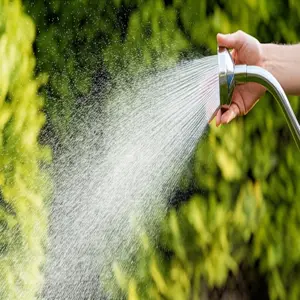
plant watering schedule
Plant Type
Different plant species have drastically different watering requirements. Consider these examples:
- Succulents and Cacti: These desert dwellers are adapted to store water and can tolerate long periods of drought. Overwatering is a common killer.
- Ferns: Ferns typically prefer consistently moist soil and high humidity.
- Flowering Plants: Flowering plants often require more frequent watering during their blooming period to support flower development.
- Tropical Plants: Many tropical plants thrive in humid conditions and need regular watering, but they don’t want to sit in soggy soil.
It’s crucial to research the specific needs of each plant you own. Online resources, plant care books, and even plant identification apps can be invaluable tools. For example, a Peace Lily will dramatically droop when it needs water, giving you a clear visual cue, while a ZZ plant can go weeks without a drink.
Soil Type
The type of soil a plant is growing in significantly impacts how quickly it dries out. Consider these soil characteristics:
- Drainage: Well-draining soil allows excess water to flow through easily, preventing waterlogging. Soils high in sand or perlite tend to drain quickly.
- Water Retention: Some soils retain more water than others. Clay soils, for example, hold onto water for a longer time.
- Organic Matter: Soils rich in organic matter (like compost or peat moss) tend to retain more moisture.
Choosing the right soil mix for your plants is essential. Cacti and succulents need a well-draining mix, while plants that prefer consistently moist soil benefit from a mix with good water retention. A general-purpose potting mix is suitable for many houseplants, but you may need to amend it based on your plant’s specific needs. Consider the plant’s origin: a Mediterranean plant will appreciate a grittier, faster-draining mix.
Pot Size and Material
The size and material of the pot also influence watering frequency:
- Pot Size: Plants in smaller pots tend to dry out faster than those in larger pots, as there’s less soil to hold moisture.
- Terracotta Pots: Terracotta is porous and allows moisture to evaporate from the sides of the pot, so plants in terracotta pots may need more frequent watering.
- Plastic or Glazed Pots: These materials are less porous, so water evaporates more slowly.
Repotting into a larger pot can sometimes reduce watering frequency, but be careful not to overpot, as this can lead to root rot. Choose a pot that’s only slightly larger than the previous one. Also, drainage holes are absolutely essential; make sure your pot has them!
Environmental Factors
The surrounding environment plays a significant role in how quickly plants dry out:
- Temperature: Plants in warmer environments transpire more water and need more frequent watering.
- Humidity: Plants in low-humidity environments lose water more quickly through their leaves.
- Light: Plants in bright, sunny locations generally need more water than those in shady spots, as they are photosynthesizing more actively.
- Air Circulation: Good air circulation can help prevent fungal diseases but can also increase water evaporation.
Adjust your watering schedule based on these environmental factors. During the hot summer months, you may need to water more frequently than during the cooler winter months. Consider using a humidifier or grouping plants together to increase humidity around them. Furthermore, location is paramount; a plant near a sunny south-facing window will dry out far more quickly than one tucked away in a north-facing corner.
Season
Plant growth and water needs naturally fluctuate with the seasons:
- Growing Season (Spring/Summer): Plants are actively growing during this time and generally need more frequent watering and fertilization.
- Dormant Season (Fall/Winter): Plant growth slows down during the dormant season, and they require less water. Overwatering during dormancy is a common mistake.
Reduce watering frequency significantly during the fall and winter months. Allow the soil to dry out more between waterings. You’ll likely find yourself watering half as often, or even less, during the winter compared to the summer.
Determining When to Water: Practical Methods
While understanding the factors above is essential, knowing exactly when to water requires a more hands-on approach. Here are several practical methods to help you determine when your plants need a drink:
The Finger Test
This is a simple yet effective method for checking soil moisture. Insert your finger about an inch or two into the soil (deeper for larger pots). If the soil feels dry to the touch, it’s time to water. If it feels moist or wet, wait a few days and check again. This method allows you to feel the moisture level below the surface, which is more accurate than just looking at the topsoil.
The Lifting Method
Get to know the weight of your pot when the soil is thoroughly watered. Then, lift the pot regularly. A dry pot will feel significantly lighter than a watered pot. This method is particularly useful for larger plants that are difficult to move. With practice, you’ll develop a sense of how heavy the pot should feel when it’s time to water.
Moisture Meters
Moisture meters are inexpensive tools that measure the moisture content of the soil. Simply insert the probe into the soil, and the meter will give you a reading. Follow the instructions on the meter to interpret the readings. While these meters can be helpful, they are not always perfectly accurate and can sometimes be affected by soil composition. They are a useful supplement to, but not a replacement for, other methods.
Visual Cues from the Plant
Your plants will often give you visual cues when they need water. Look for the following signs:
- Wilting: Drooping leaves are a classic sign of underwatering. However, wilting can also be a sign of overwatering, so check the soil moisture before watering.
- Yellowing Leaves: Yellowing leaves can indicate various problems, including both overwatering and underwatering. Check the soil moisture and consider other factors like nutrient deficiencies.
- Dry, Crispy Leaf Edges: This is often a sign of low humidity or underwatering.
- Slow Growth: If your plant’s growth has slowed down significantly, it may not be getting enough water.
Learning to “read” your plants is a crucial skill for any plant parent. Pay attention to the subtle changes in their appearance and behavior. Remember that overwatering and underwatering can sometimes present with similar symptoms, so it’s always important to check the soil moisture before making any adjustments to your watering schedule. Consider keeping a plant journal where you record watering dates, soil conditions, and the plant’s response; this will help you identify patterns and refine your watering routine.
Using Technology: Smart Watering Systems
In recent years, smart watering systems have become increasingly popular. These systems use sensors to monitor soil moisture, temperature, and other environmental factors and automatically adjust watering schedules accordingly. They can be controlled via smartphone apps, allowing you to monitor and manage your plants’ watering needs from anywhere.
These systems can be a significant investment, but they can also save you time and water, and potentially prevent overwatering or underwatering, especially if you have a large collection of plants or travel frequently. Some popular options include smart sprinkler systems for outdoor gardens and self-watering pots with built-in sensors for indoor plants. However, remember that even with these systems, it’s still important to monitor your plants regularly and make adjustments as needed, as they are not foolproof.
How to Water: Best Practices
The way you water your plants is just as important as how often you water them. Here are some best practices to ensure your plants get the hydration they need:
Water Deeply and Infrequently
Instead of giving your plants small sips of water frequently, water deeply and less often. This encourages the roots to grow deeper into the soil, making them more resilient to drought. Water until excess water drains out of the drainage holes at the bottom of the pot. This ensures that the entire root ball is thoroughly moistened. Avoid letting the plant sit in standing water, as this can lead to root rot.
Water at the Right Time of Day
The best time to water plants is typically in the morning. This allows the leaves to dry out during the day, reducing the risk of fungal diseases. Avoid watering in the evening, as the leaves may remain wet overnight, creating a favorable environment for fungal growth. Watering in the heat of the day can also lead to water loss through evaporation before the plant can absorb it. In addition, avoid splashing water on the leaves, especially in direct sunlight, as this can cause scorching.
Use the Right Type of Water
The type of water you use can also impact plant health:
- Tap Water: Tap water is generally safe for most plants, but it can contain chlorine, fluoride, and other chemicals that can be harmful to some sensitive species. Let tap water sit out for 24 hours before using it to allow these chemicals to dissipate.
- Rainwater: Rainwater is an excellent source of water for plants, as it is naturally soft and free of chemicals. Collect rainwater in a clean container and use it to water your plants.
- Distilled Water: Distilled water is free of minerals and chemicals and is a good option for sensitive plants like orchids and carnivorous plants.
Avoid using softened water, as it contains high levels of sodium, which can be harmful to plants. Consider testing your tap water for pH and mineral content if you suspect it may be affecting your plants’ health. *_Link to Water Testing Resource Here_*
Watering Methods
Different watering methods can be used depending on the plant type and your preferences:
- Top Watering: This is the most common method, where you pour water directly onto the soil surface. Ensure you water slowly and evenly to allow the water to soak into the soil.
- Bottom Watering: This method involves placing the pot in a tray of water and allowing the soil to absorb the water from the bottom up. This encourages root growth downwards. Leave the pot in the water for about 30 minutes, or until the top of the soil feels moist, then remove it and allow any excess water to drain.
- Misting: Misting is a good way to increase humidity around plants, especially those that prefer high humidity. However, misting alone is not a substitute for watering the soil.
- Self-Watering Pots: These pots have a reservoir of water at the bottom, which the plant can access as needed. They can be a convenient option for busy plant parents, but it’s still important to monitor the soil moisture and refill the reservoir as needed.
Experiment with different watering methods to find what works best for you and your plants. Consider the size and type of plant, as well as the humidity in your home. For example, bottom watering can be particularly beneficial for plants with sensitive foliage, as it prevents water from sitting on the leaves and potentially causing fungal problems.
Tailored Watering Advice for Different Plant Types
As mentioned earlier, different plant types have different watering needs. Here’s a more detailed look at watering advice for some popular plant categories:
Succulents and Cacti
These plants are drought-tolerant and prefer to dry out completely between waterings. Overwatering is the most common cause of death for succulents and cacti.
Watering Frequency: Water deeply only when the soil is completely dry. This could be every 2-4 weeks, or even longer, depending on the environment.
Soil: Use a well-draining cactus or succulent potting mix.
Signs of Overwatering: Soft, mushy leaves; yellowing leaves; root rot.
Signs of Underwatering: Shriveled leaves; stunted growth.
During the winter months, succulents and cacti require even less water. You may only need to water them once a month or even less. Be sure to provide plenty of sunlight.
Ferns
Ferns prefer consistently moist soil and high humidity.
Watering Frequency: Water regularly to keep the soil consistently moist, but not soggy.
Soil: Use a well-draining potting mix that retains moisture.
Signs of Overwatering: Yellowing leaves; brown, soggy fronds; root rot.
Humidity: Mist regularly or place the plant on a pebble tray with water to increase humidity.
Boston ferns are notorious for drying out quickly, so check the soil moisture daily. Consider using a self-watering pot to help maintain consistent moisture levels.
Flowering Plants
Flowering plants generally need more water during their blooming period.
Watering Frequency: Water regularly to keep the soil moist, but avoid overwatering.
Soil: Use a well-draining potting mix.
Signs of Overwatering: Yellowing leaves; drooping flowers; root rot.
Signs of Underwatering: Wilting; dry, crispy flower petals; bud drop.
Fertilizing: Fertilize regularly during the growing season to support flower development.
The specific watering needs of flowering plants vary depending on the species. For example, orchids require very different watering than African violets. Research the specific needs of your flowering plants to ensure you’re providing them with the right amount of water.
Tropical Plants
Many tropical plants thrive in humid conditions and need regular watering, but they don’t want to sit in soggy soil.
Watering Frequency: Water when the top inch of soil is dry to the touch.
Soil: Use a well-draining potting mix that retains some moisture.
Signs of Overwatering: Yellowing leaves; edema (blisters) on leaves; root rot.
Signs of Underwatering: Wilting; dry, crispy leaf edges.
Humidity: Increase humidity by misting regularly, using a humidifier, or grouping plants together.
Examples of tropical plants include Peace Lilies, Monsteras, and Philodendrons. These plants appreciate consistent moisture but are also susceptible to root rot if overwatered. Ensure good drainage and allow the topsoil to dry out slightly between waterings.
Herbs
Watering herbs depend on the type of herb, but generally, they need regular watering to thrive.
Watering Frequency: Most herbs prefer consistently moist soil, but avoid overwatering. Water when the top inch of soil is dry.
Soil: Use well-draining potting mix.
Signs of Overwatering: Yellowing leaves, mold growth on soil.
Signs of Underwatering: Wilting, dry leaves, stunted growth.
Sunlight: Most herbs need at least 6 hours of sunlight per day.
Different herbs have different needs, for example, rosemary is drought-tolerant while basil needs consistently moist soil. Also, note that herbs in pots dry out faster than herbs in the ground.
Here is a table summarizing the recommended watering frequency for common plants. This is only a guideline, so adjust accordingly!
| Plant Type | Watering Frequency | Additional Notes |
|---|---|---|
| Succulents/Cacti | Every 2-4 weeks (or longer) | Allow soil to dry completely between waterings. |
| Ferns | Regularly (keep soil moist) | High humidity is important. |
| Flowering Plants | Regularly (keep soil moist) | Water more frequently when blooming. |
| Tropical Plants | When top inch of soil is dry | Maintain high humidity. |
| Herbs | When top inch of soil is dry | Consider needs for individual types of herbs. |
| Snake Plant | Every 2-4 weeks | Extremely drought tolerant. Avoid overwatering. |
| ZZ Plant | Every 2-4 weeks | Very drought tolerant. Avoid overwatering. |
| Peace Lily | When top inch of soil is dry | Droops dramatically when thirsty. |
| Spider Plant | When top inch of soil is dry | Relatively easy to care for. |
Troubleshooting Common Watering Problems
Even with the best intentions, watering problems can still arise. Here are some common issues and how to address them:
Overwatering
Overwatering is one of the most common plant-watering mistakes. It deprives the roots of oxygen, leading to root rot and other problems. Signs of overwatering include:
* Yellowing leaves
* Drooping leaves (even when the soil is wet)
* Soft, mushy stems or roots
* Fungus gnats (small flies that thrive in moist soil)
* Root rot (roots appear brown or black and slimy)
If you suspect your plant is overwatered, take the following steps:
1. Stop watering immediately.
2. Allow the soil to dry out completely.
3. If the plant is severely overwatered, consider repotting it with fresh, dry soil.
4. Inspect the roots for signs of root rot and remove any affected roots.
5. Improve drainage by adding perlite or other drainage amendments to the soil.
Prevention is key when it comes to overwatering. Always check the soil moisture before watering and adjust your watering schedule based on the plant’s needs and environmental conditions. Consider using terracotta pots, which allow the soil to dry out more quickly.
Underwatering
Underwatering occurs when a plant doesn’t receive enough water to meet its needs. Signs of underwatering include:
* Wilting leaves
* Dry, crispy leaf edges
* Stunted growth
* Dry, compacted soil
If you suspect your plant is underwatered, take the following steps:
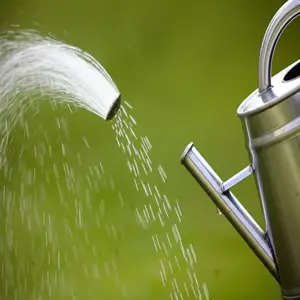
watering frequency
1. Water the plant thoroughly until water drains out of the drainage holes.
2. If the soil is very dry and compacted, it may be difficult for the water to penetrate. In this case, try bottom watering or soaking the pot in a bucket of water for a few hours.
3. Increase humidity by misting the plant regularly or placing it on a pebble tray with water.
To prevent underwatering, check the soil moisture regularly and adjust your watering schedule as needed. Consider using a self-watering pot or adding water-retentive polymers to the soil to help retain moisture.
Root Rot
Root rot is a fungal disease that affects the roots of plants, typically caused by overwatering. It prevents the roots from absorbing water and nutrients, leading to plant decline.
Symptoms: Yellowing leaves, wilting, stunted growth, soft, mushy roots that are brown or black.
Treatment:
1. Remove the plant from its pot and gently wash away the soil from the roots.
2. Cut away any affected roots with sterile scissors or pruning shears.
3. Repot the plant in fresh, well-draining soil.
4. Consider treating the plant with a fungicide specifically designed for root rot.
5. Adjust your watering schedule to prevent overwatering in the future.
Root rot can be difficult to treat, especially if it’s advanced. Prevention is key. Always use well-draining soil, avoid overwatering, and ensure good air circulation around the plant.
Leaf Spot Diseases
Leaf spot diseases are fungal or bacterial infections that cause spots to appear on the leaves. These diseases are often caused by excessive moisture on the leaves, poor air circulation, and unsanitary conditions.
Symptoms: Spots on leaves, which can vary in color and size depending on the disease.
Treatment:
1. Remove any affected leaves.
2. Improve air circulation around the plant.
3. Avoid splashing water on the leaves when watering.
4. Treat the plant with a fungicide or bactericide if the infection is severe.
Prevention is important. Provide good air circulation, avoid overhead watering, and keep the leaves clean. If you notice any signs of leaf spot disease, act quickly to prevent it from spreading.
Watering and Sustainability: Reducing Your Environmental Impact
In 2024, sustainability is more important than ever. Here are some ways to reduce your environmental impact when watering plants:
Collect Rainwater: As mentioned earlier, rainwater is an excellent source of water for plants and is free of chemicals. Collect rainwater in a rain barrel or other container and use it to water your plants.
Use Greywater: Greywater is wastewater from showers, sinks, and washing machines. It can be used to water non-edible plants, but be sure to filter it first and avoid using it on plants that are sensitive to salts.
Water Wisely: Avoid watering during the hottest part of the day to reduce water loss through evaporation. Use a watering can or soaker hose to target the roots of the plants, rather than spraying water over the entire plant.
Choose Drought-Tolerant Plants: If you live in a dry climate, choose plants that are drought-tolerant and require less water.
Reduce Runoff: Avoid overwatering, which can lead to runoff and water waste. Use mulch to help retain moisture in the soil.
Use Smart Watering Systems: Smart watering systems can help you conserve water by automatically adjusting watering schedules based on weather conditions and soil moisture levels.
Consider Xeriscaping: For outdoor gardens, explore Xeriscaping, a landscaping method that uses drought-tolerant plants and water-wise techniques to minimize water usage.
By adopting these sustainable watering practices, you can help conserve water and reduce your environmental impact while still enjoying healthy, thriving plants.
Current Trends and Statistics in Plant Watering (2024 Update)
The world of plant care is constantly evolving, with new trends and technologies emerging all the time. Here’s a look at some current trends and statistics related to plant watering in 2024:
Increased Adoption of Smart Watering Systems: The market for smart watering systems is growing rapidly, driven by increasing awareness of water conservation and the convenience of automated watering. According to a report by Grand View Research, the global smart irrigation market is expected to reach $3.9 billion by 2027.
Growing Interest in Sustainable Gardening Practices: More and more people are adopting sustainable gardening practices, such as collecting rainwater, using greywater, and choosing drought-tolerant plants. This trend is driven by increasing concerns about climate change and water scarcity.
Rise of Indoor Gardening: Indoor gardening is becoming increasingly popular, especially among urban dwellers. This trend is fueled by the desire to connect with nature and improve indoor air quality. Smart watering solutions are particularly attractive for indoor gardening, where space is limited and consistent watering can be challenging.
Focus on Soil Health: There’s a growing awareness of the importance of soil health for plant growth and water retention. Gardeners are increasingly using organic soil amendments, such as compost and worm castings, to improve soil structure and water-holding capacity.
Data-Driven Watering: Some plant care companies are using data analytics to optimize watering schedules for different plant species and environmental conditions. This approach can help gardeners provide their plants with the right amount of water at the right time, reducing the risk of overwatering or underwatering.
These trends reflect a growing awareness of the importance of responsible plant care and water conservation. By staying informed about the latest developments in plant watering, you can make more sustainable choices and ensure your plants thrive.
Regulations and Water Restrictions
In many regions, water restrictions are becoming increasingly common due to drought and water scarcity. It’s important to be aware of any local regulations or restrictions on watering plants.

signs of overwatering
Check with Your Local Water Authority: Contact your local water authority to find out about any current water restrictions in your area.
Watering Schedules: Many municipalities impose watering schedules that limit the days or times when you can water your plants.
Watering Bans: In severe drought conditions, watering bans may be implemented, prohibiting all outdoor watering.
Fines for Violations: Violating water restrictions can result in fines.
Complying with local water restrictions is essential for conserving water and avoiding penalties. If you live in an area with water restrictions, consider using drought-tolerant plants, collecting rainwater, and implementing other water-saving measures.
FAQ: Common Questions About Watering Plants
How do I know if I’m overwatering my plants?
Signs of overwatering include yellowing leaves, drooping leaves (even when the soil is wet), soft, mushy stems or roots, fungus gnats, and root rot.
How do I know if I’m underwatering my plants?
Signs of underwatering include wilting leaves, dry, crispy leaf edges, stunted growth, and dry, compacted soil.
What type of water is best for plants?
Rainwater is the best option, followed by tap water that has been allowed to sit out for 24 hours. Avoid using softened water.
How often should I water succulents and cacti?
Water deeply only when the soil is completely dry, which could be every 2-4 weeks, or even longer, depending on the environment.
How often should I water ferns?
Water regularly to keep the soil consistently moist, but not soggy. Ferns also prefer high humidity.
Is it better to water in the morning or the evening?
The best time to water plants is typically in the morning. This allows the leaves to dry out during the day, reducing the risk of fungal diseases.
What is root rot and how do I treat it?
Root rot is a fungal disease that affects the roots of plants, typically caused by overwatering. To treat it, remove the plant from its pot, cut away any affected roots, repot in fresh, well-draining soil, and consider treating with a fungicide.
How can I increase humidity around my plants?
You can increase humidity by misting the plants regularly, using a humidifier, or placing the plants on a pebble tray with water.
What are smart watering systems and are they worth the investment?
Smart watering systems use sensors to monitor soil moisture and automatically adjust watering schedules. They can be a good investment if you have a large collection of plants or travel frequently, but they are not foolproof and require monitoring.
How can I reduce my environmental impact when watering plants?
Collect rainwater, use greywater (for non-edible plants), water wisely, choose drought-tolerant plants, reduce runoff, and consider Xeriscaping for outdoor gardens.
Conclusion: Final Thoughts on Mastering Plant Watering in 2024
Mastering the art of watering plants is a journey, not a destination. There’s no single magic formula, and what works for one plant or in one environment might not work for another. The key to success lies in understanding the fundamental principles discussed in this guide, observing your plants closely, and being willing to adjust your approach as needed.
As we move further into 2025, the importance of sustainable practices and water conservation cannot be overstated. By adopting water-wise techniques and embracing new technologies like smart watering systems, we can ensure that our plants thrive while minimizing our environmental impact. Remember that every drop counts, and even small changes in our watering habits can make a big difference. The increasing trend of indoor gardening, coupled with growing concerns about climate change, highlights the need for informed and responsible plant care practices.
Don’t be discouraged by setbacks. Every plant parent has faced the heartbreak of a plant that succumbed to overwatering or underwatering. View these experiences as learning opportunities. Keep a plant journal to track your watering schedules and observe how your plants respond. Experiment with different watering methods and soil mixes to find what works best for your specific conditions.
Most importantly, remember to enjoy the process of nurturing your plants and creating a green oasis in your home or garden. The rewards of a thriving plant collection are well worth the effort, bringing beauty, tranquility, and a connection to nature into your daily life.
Finally, don’t hesitate to seek advice from experienced plant enthusiasts or local nurseries. The plant community is a supportive and knowledgeable resource that can help you on your plant-parenting journey. Now go forth and water wisely!
Auto Amazon Links: No products found.
Perfect Plants Christmas Tree Saver 8oz. | Easy Use Xmas Tree Preserver Food | Have Healthy Green Christmas Trees All Holiday Season
$9.97 (as of December 15, 2025 05:17 GMT +00:00 - More info- Product prices and availability are accurate as of the date/time indicated and are subject to change. Any price and availability information displayed on [relevant Amazon Site(s), as applicable] at the time of purchase will apply to the purchase of this product.
FirEver Pure Christmas Tree Food | Preserver Additive & Season Extender for Live Xmas Trees | Keep It Green, Reduce Needle-Drop | Miracle Freshness (8 oz)
$14.99 (as of December 15, 2025 05:17 GMT +00:00 - More info- Product prices and availability are accurate as of the date/time indicated and are subject to change. Any price and availability information displayed on [relevant Amazon Site(s), as applicable] at the time of purchase will apply to the purchase of this product.
Rocky Mountain Goods Christmas Tree Food - 8 oz Tree Preservative - Reduce Needle Drop - Greener Scent - Fir, Pine, Spruce Trees - Extend Tree Life
$9.95 (as of December 15, 2025 05:17 GMT +00:00 - More info- Product prices and availability are accurate as of the date/time indicated and are subject to change. Any price and availability information displayed on [relevant Amazon Site(s), as applicable] at the time of purchase will apply to the purchase of this product.
VICAMB 39.3 Inch Christmas Tree Watering Funnel,Christmas Tree Watering System Device,Long Tree Watering Funnel Spout for Indoor Outdoor Xmas Tree
$17.99 (as of December 15, 2025 05:17 GMT +00:00 - More info- Product prices and availability are accurate as of the date/time indicated and are subject to change. Any price and availability information displayed on [relevant Amazon Site(s), as applicable] at the time of purchase will apply to the purchase of this product.
EZMeetU Christmas Tree Watering Funnel, 47 Inch Flower Shape Adjustable 6 Section Design, Christmas Tree Watering System, Christmas Tree Waterer, Long Funnel Wide Opening Reusable, Plant Watering Tool
$16.99 (as of December 15, 2025 05:17 GMT +00:00 - More info- Product prices and availability are accurate as of the date/time indicated and are subject to change. Any price and availability information displayed on [relevant Amazon Site(s), as applicable] at the time of purchase will apply to the purchase of this product.
Snow Joe Premium Enviro Blend Ice Melt, Green-Coated Deicer Crystals, 50 lb - Safer Melter for Vegetation, Concrete & Metals w/ Anti-Corrosion Calcium Magnesium Acetate
$32.97 (as of December 12, 2025 19:27 GMT +00:00 - More info- Product prices and availability are accurate as of the date/time indicated and are subject to change. Any price and availability information displayed on [relevant Amazon Site(s), as applicable] at the time of purchase will apply to the purchase of this product.
Muddy Mat® Shown on TV Super Absorbent Microfiber Dog Door Mat for Muddy Paws, Non-Slip Washable Pet Rug, Quick Dry Chenille Entryway Carpet, Machine Washable Indoor Outdoor mat, Grey 30"x19"
$24.95 (as of December 12, 2025 19:27 GMT +00:00 - More info- Product prices and availability are accurate as of the date/time indicated and are subject to change. Any price and availability information displayed on [relevant Amazon Site(s), as applicable] at the time of purchase will apply to the purchase of this product.
ivtivfu Rolling Grill Basket, Removable Wooden Handle, 304 Stainless Steel, Nesting BBQ Tools, Smoker Grilling Accessories for Vegetable, Outdoor Cooking Camping, Birthday Gifts for Men Dad Husband
$25.99 (as of December 12, 2025 19:27 GMT +00:00 - More info- Product prices and availability are accurate as of the date/time indicated and are subject to change. Any price and availability information displayed on [relevant Amazon Site(s), as applicable] at the time of purchase will apply to the purchase of this product.
XXXFLOWER Plant Terrarium with Wooden Stand, Air Planter Bulb Glass Vase Metal Swivel Holder Retro Tabletop for Hydroponics Home Garden Office Decoration - 3 Bulb Vase
$18.98 (as of December 12, 2025 19:27 GMT +00:00 - More info- Product prices and availability are accurate as of the date/time indicated and are subject to change. Any price and availability information displayed on [relevant Amazon Site(s), as applicable] at the time of purchase will apply to the purchase of this product.
Zevo Flying Insect Trap Official Refill Cartridges - Fits Both Zevo Trap & MAX Indoor Fly Trap - Authentic Trap+Lock Technology to Catch Gnats, House & Fruit Flys (4 Official Refill Cartridges)
$14.97 (as of December 12, 2025 19:27 GMT +00:00 - More info- Product prices and availability are accurate as of the date/time indicated and are subject to change. Any price and availability information displayed on [relevant Amazon Site(s), as applicable] at the time of purchase will apply to the purchase of this product.

